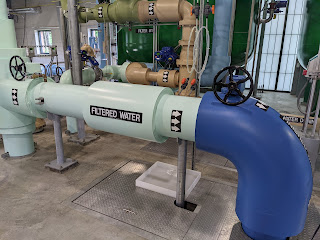Important Information About Drinking Water
All sources of drinking water (both tap water and bottled water), including rivers, lakes, streams, ponds, reservoirs, springs, and wells, contain some naturally occurring contaminants or substances.
Because water is the universal solvent, it dissolves naturally occurring minerals and, in some cases, radioactive material, and can pick up substances resulting from the presence of animal and human activity.
Drinking water, including bottled water, may reasonably be expected to contain at least small amounts of some contaminants. The presence of contaminants does not necessarily indicate that water poses a health risk. More information about contaminants and potential health effects can be obtained by calling the Environmental Protection Agency's (EPA) Safe Drinking Water Hotline at 800-426-4791.
Removing all contaminants would be extremely expensive and in nearly all cases would not provide greater protection of health.
To ensure that your water is safe to drink, the Massachusetts Department of Environmental Protection (MassDEP) and the EPA regulate the allowable amount of certain contaminants in the water provided by public water systems. The Food and Drug Administration (FDA) and the Massachusetts Department of Public Health regulations establish limits for contaminants in bottled water that must provide the same protection for public health. This report provides you with information about the contaminants found naturally in your drinking water, the levels at which they are found, and the likely source of each contaminant.
Contaminants that can be present include:
Microbial contaminants, such as viruses and bacteria, that may come from sewage treatment plants, septic systems, agricultural livestock operations, and wildlife.
Pesticides and herbicides, which may come from a variety of sources, such as agriculture, urban stormwater runoff, and residential uses.
Inorganic contaminants, such as salts and metals, which can be naturally occurring or result from urban stormwater runoff, industrial or domestic wastewater discharges, oil and gas production, mining, or farming.
Organic chemical contaminants, including synthetic and volatile organic chemicals, which are byproducts of industrial processes and petroleum production, and can also come from gas stations, urban storm water runoff, and septic systems.
Radioactive contaminants, that can be naturally occurring or be the result of oil and gas production and mining activities
 |
| equipment at the Grove St water treatment plant |